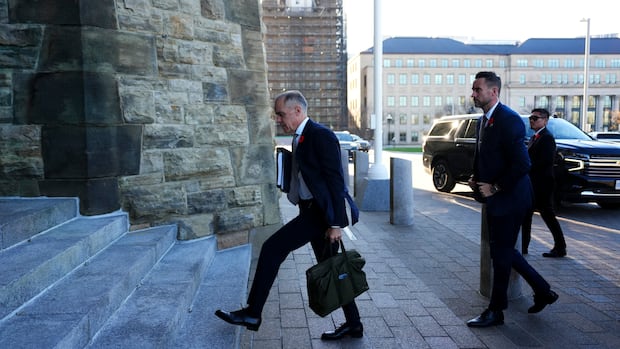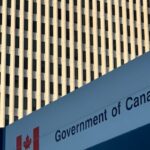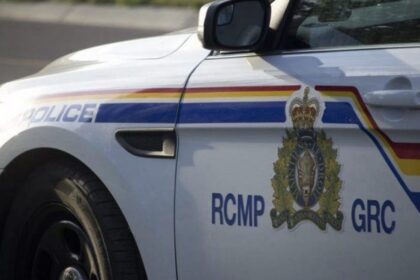Liberals table 1st budget under Carney: What’s next?Get the latest reaction after Prime Minister Mark Carney’s government introduced a budget with billions in spending and a deficit that has risen to $78B. The Liberals, who say the budget will stimulate investment, now face the next step — gaining enough support from opposition partiesPrime Minister Mark Carney’s Liberal government delivered its first budget Tuesday, promising “a new era of leadership and a new economic foundation.”The 406-page document details billions in proposed cuts and investments meant to spur growth and productivity amidst trade uncertainty and a slowing economy. Here are some of the highlights of the Liberals’ 2025 budget.The top-line numbersThe budget projects a deficit of $78 billion for 2025-26, which is forecast to drop to $65 billion next fiscal year and then gradually fall to $57 billion in 2029-30. The budget pledges to balance operational spending in three years. Still, this year’s deficit is far more than the $42 billion the last Liberal government promised it would be — and what the Conservatives said they would be willing to support.This budget also calls for some $141 billion in new spending over the next five years, which will partially be offset by billions in cuts and other savings .Downsizing government, reducing spendingA public service building at Tunney’s Pasture in Ottawa. (Sean Kilpatrick/Canadian Press)Ottawa has been running a “comprehensive expenditure review,” with the goal of spending less on the day-to-day running of the federal government. According to the budget, that plan will save $13 billion annually by 2028-29, for a total with other savings and revenues of $60 billion over five years.The budget promises more taxpayer dollars will go toward “nation-building infrastructure, clean energy, innovation, productivity and less on day-to-day operating spending.” This “new discipline” will help protect social benefits, the budget promises.The public service will see a drop in about 40,000 positions over the coming years. The budget projects it will have 330,000 employees in 2028-29, down from the 368,000 counted last year.‘Supercharging’ growth and competitionTo confront an anemic economic picture, the government says it’s “supercharging growth” and vows to “make Canada’s investment environment more competitive than the U.S.”To that end, the budget brings forward a “productivity super-deduction” tax measure that will allow companies to write off larger shares of capital investments more quickly.There are also new measures specifically for writing off expenses for manufacturing or processing buildings and a new capital cost allowance for liquefied natural gas (LNG) equipment and related buildings.Build, build, build An aerial view shows carpenters building a log home made from white pine in Salaberry-de-Valleyfield, Que., on Wednesday, Oct. 22, 2025. (Christinne Muschi/The Canadian Press)Since campaigning in the surprise Liberal leadership race early this year, Carney has promised to build projects with speed in Canada. His marquee policy, the Major Projects Office, is already up and running.The budget provides $214 million over five years and eyes approving critical mineral projects next as well as getting construction on the high-speed railway from Toronto to Quebec City started in four years, instead of the previously planned eight.The budget also includes $51 billion over 10 years for local infrastructure such as housing, roads, water/wastewater and health facilities. The government said this will create thousands of jobs. Substantial cuts to immigration A Canadian passport sits on a suitcase in Ottawa on Tuesday, Jan. 17, 2023. (Sean Kilpatrick/Canadian Press)Selling it as Ottawa “taking back control” over an immigration system that has put pressure on Canada’s housing supply and health-care system, budget 2025 promises to lower admission targets.The new plan proposes to drastically reduce the target for new temporary resident admissions from 673,650 in 2025 to 385,000 in 2026.The 2026-28 immigration levels plan would keep permanent resident admission targets at 380,000 per year, down from 395,000 in 2025.The government is also proposing to undertake a one-time measure to accelerate the transition of up to 33,000 work permit holders to permanent residency in 2026 and 2027.“These workers have established strong roots in their communities, are paying taxes and are helping to build the strong economy Canada needs,” the budget notes. To fill labour gaps, the Liberals’ plan includes a foreign credential recognition action fund to work with the provinces and territories to improve transparency, timeliness and consistency of foreign credential recognition. It would also launch what’s a strategy to attract international talent, including a one-time initiative to recruit over a thousand highly qualified international researchers to Canada.Billions in increased defence spendingAn image of a CF-35, the Canadian variant of the F-35 fighter aircraft, is seen at the Lockheed Martin booth at the Canadian Association of Defence and Security Industries annual defence industry trade show CANSEC, in Ottawa, on Wednesday, May 28, 2025. (Justin Tang/The Canadian Press)The budget pledges a consequential increase in defence spending. Carney had already pledged $9.3 billion after he promised to meet NATO’s target of two per cent of GDP spending by March 31 and five per cent by 2035Budget 2025 earmarks $81.8 billion for defence over five years, roughly $72 billion of which is new money,It details more than $20 billion over five years, to recruit and retain Canadian Armed Forces members and another $19 billion over the same time period to sustain CAF capabilities and invest in defence infrastructure.The Communications Security Establishment, the government’s foreign signal intelligence agency, is also getting billions to boost its digital infrastructure, including what’s “needed for modern warfare, such as cyber defence.”Au revoir oil and gas emission cap?A pumpjack draws out oil and gas from a well head with a Canola field in the background near Cremona, Alta., Tuesday, July 15, 2025. Canada has the third largest oil reserves in the world and is the world’s fourth largest oil producer. (Jeff McIntosh/The Canadian Press)One of the looming questions heading into the budget was whether Carney would scrap the oil and gas emissions cap.The budget said effective carbon markets, enhanced oil and gas methane regulations, and the deployment at scale of technologies such as carbon capture and storage “would create the circumstances whereby the oil and gas emissions cap would no longer be required.”The draft policy was released last year but never implemented.More money for CBC/Radio-Canada, spotlight on Eurovision JJ, representing Austria, celebrates after winning the Grand Final of the 69th Eurovision Song Contest Opening Ceremony in Sweden. Could a Canadian be next? (Harold Cunningham/Getty Images)Budget 2025 proposes to provide $150 million for CBC/Radio-Canada this year to “strengthen its mandate to serve the public and to better reflect the needs of Canadians.”The government said it will also explore modernizing the public broadcaster’s mandate to “strengthen independence.”And for fans of the wild and wacky Eurovision Song Contest, the government teased that it’s working with CBC/Radio Canada to explore participation in the annual music showdown.Bye to some high-end taxesPeople gaze at the latest luxury yachts at the boot 2017, the world’s leading boat fair for all kind of water sports in Duesseldorf, Germany, Tuesday, Jan. 24, 2017. (Martin Meissner/ Associated Press)If you’re a landlord with a vacant unit or the owner of a luxury jet, you’re in luck. The government is eliminating two high-end taxes. The first is the underused housing tax, a one per cent tax on the ownership of vacant or underused housing in Canada that took effect in January 2022.It’s also eliminating the luxury tax on aircraft priced over $100,000 and boats priced over $250,000.The budget said the moves are meant to “simplify Canada’s tax system” and reduce compliance costs for taxpayers and administrative costs for the government.
Monday, 22 Dec 2025
Canada – The Illusion
Search
Have an existing account?
Sign In
© 2022 Foxiz News Network. Ruby Design Company. All Rights Reserved.
You May also Like
- More News:
- history
- Standing Bear Network
- John Gonzalez
- ᐊᔭᐦᑊ ayahp — It happened
- Creation
- Beneath the Water
- Olympic gold medal
- Jim Thorpe
- type O blood
- the bringer of life
- Raven
- Wás’agi
- NoiseCat
- 'Sugarcane'
- The rivers still sing
- ᑲᓂᐸᐏᐟ ᒪᐢᑿ
- ᐅᑳᐤ okâw — We remember
- ᐊᓂᓈᐯᐃᐧᐣ aninâpêwin — Truth
- This is what it means to be human.
- Nokoma











